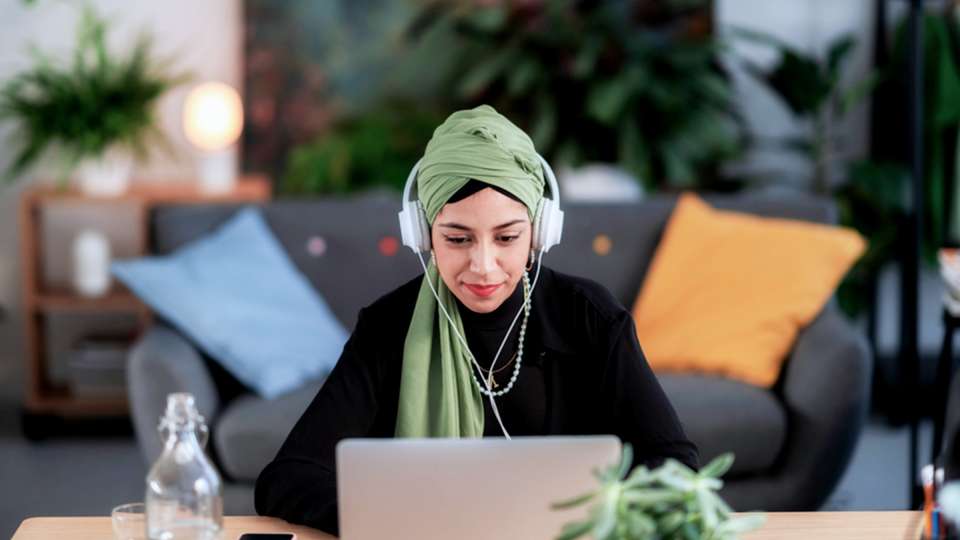
Students, parents, employees — many of us pride ourselves on our ability to multitask, but it turns out juggling multiple jobs makes us less productive and more stressed (not the other way around).
So close out those extra tabs, turn off your notifications and focus — we’re sharing how to get more done and feel less anxious while you do.
Your brain isn’t built to multitask
You may think you’re multitasking when you respond to an email during a meeting, but it turns out this isn’t the case.
“The answer is, flatly, we do not multitask. The brain isn’t designed to do more than one thing at a time or simultaneously do multiple things at once,” says Nickolas Dasher, a clinical neuropsychologist at UW Medicine in the Department of Rehabilitation Medicine.
Instead, your brain is rapidly switching focus back and forth from one task to the other.
There are three main networks in your brain that work together to help you focus. Your dorsal attention network takes in visual and external stimuli; the ventral network integrates sensory and internal stimuli (such as your emotions or how you’re feeling); and the frontoparietal network plays an executive role, mediating between the two other systems to determine what stimuli is relevant and what you can disregard.
These systems must disengage and reengage your focus each time you switch between tasks — think each push notification, email or text that draws your attention away, Dasher says. And all that shifting has a cost.
Multitasking decreases productivity and increases stress
Multitasking increases your cognitive load, or the amount of information your working memory is holding at any given time. A high cognitive load taxes your mental resources and, in turn, you may start to forget things.
“Lower cognitive load means you’re better at accuracy. High cognitive load means you are more likely to make mistakes,” Dasher says.
Multitasking not only increases your chance of making errors, but it also slows you down because of the time it takes your brain to switch focus from one task to another. Dasher likens this to a computer that needs to reboot between tasks — you are wasting time and energy powering off and on again.
All of this plays into feeling stressed and overwhelmed. Instead of completing multiple tasks, you might instead have error-riddled documents, projects behind deadline and a foggy memory of what occurred in that afternoon meeting — none of which helps provide a sense of calm.
3 ways to boost productivity (instead of multitasking)
Manage your stress with diaphragmatic breathing
“The more stressed or anxious you are, the less you are able to function,” Dasher says.
When you’re stressed, your sympathetic nervous system diverts resources from your brain to your large muscles, heart and lungs. This response helps you fight or flee from danger but also reduces your cognitive ability and working memory (making it less helpful when you are trying to be productive).
Diaphragmatic breathing reduces your stress level by activating your parasympathetic system, the opposite system to your fight-or-flight response, which helps your body relax and rest. To practice, focus on your diaphragm (or notice your belly) as you breathe. Take a slow, normal-sized breath through your nose, briefly pause, then breathe out through your mouth.
Chunk out your time
Rather than multitask, prioritize what you need to do then set aside chunks of time to work on one task at a time.
A popular way to do this is the Pomodoro technique, in which you focus on a task for 25 minutes and then take a five-minute break. After four sets, you take a longer 15- to 30-minute break.
Ultimately, the amount of time you set aside for each task is up to you, though Dasher notes it’s hard to sustain focus on one thing for longer than 60-70 minutes, so aim to take a break after about an hour.
Fight distractions (and still get a dopamine boost)
Life is full of distractions that pull your attention away from the task you are working on.
Part of the reason distractions are so enticing is these activities (such as checking social media or your texts) give you a burst of dopamine, the feel-good chemical in your brain. However, some research has found that getting in “the zone” or “flow” while working can do this as well.
“When you’re in the zone, you’re getting a really strong reinforcement response from the brain, which is sending you dopamine,” Dasher says.
The key is to set aside time and space to focus on a project so you can enter a flow state. Limit distractions by silencing notifications, closing out tabs, putting your phone away and generally setting up your workspace in an area where you won’t be disturbed.
If there are situations where you struggle with attention (say, that Friday afternoon video meeting) you can also aim to ask at least one question or comment to keep yourself engaged. And you want to make sure you get enough sleep, as being fatigued makes it harder to focus for long periods of time.
While a flow state is ideal, it doesn’t have to be the goal. Even if you can’t get in the zone, cutting back on how much you are trying to do at once will still improve productivity, and that feels pretty great.

 Healthy ideas for your inbox
Healthy ideas for your inbox





